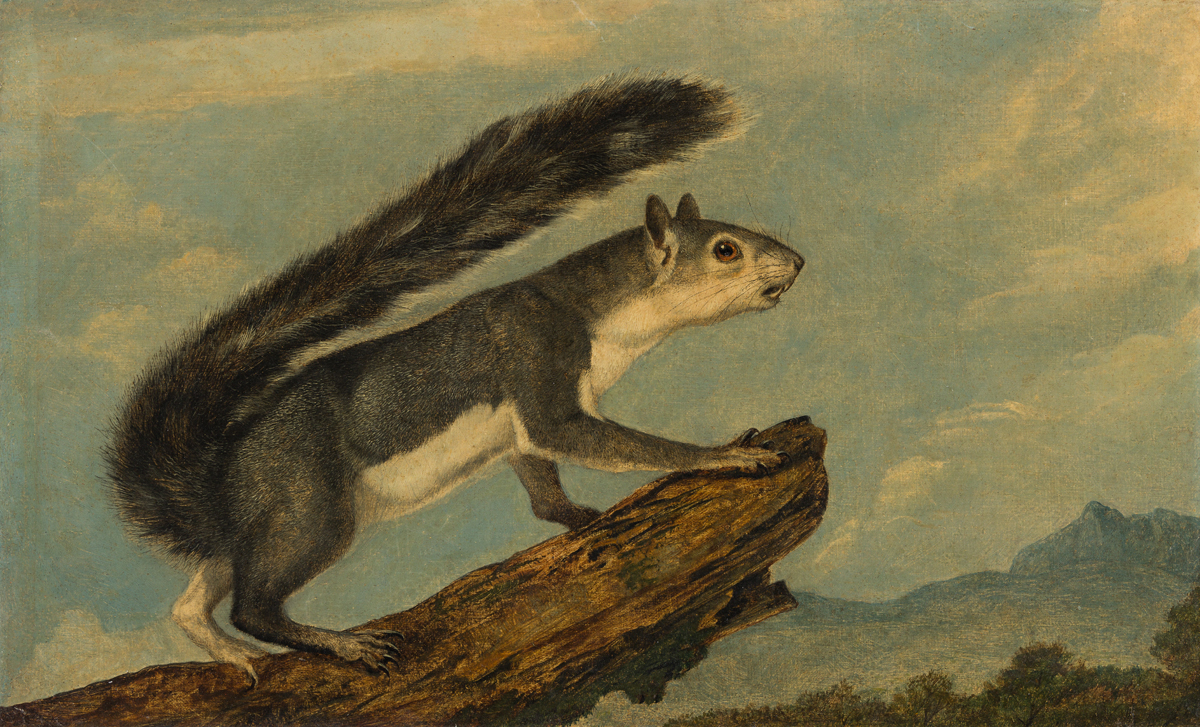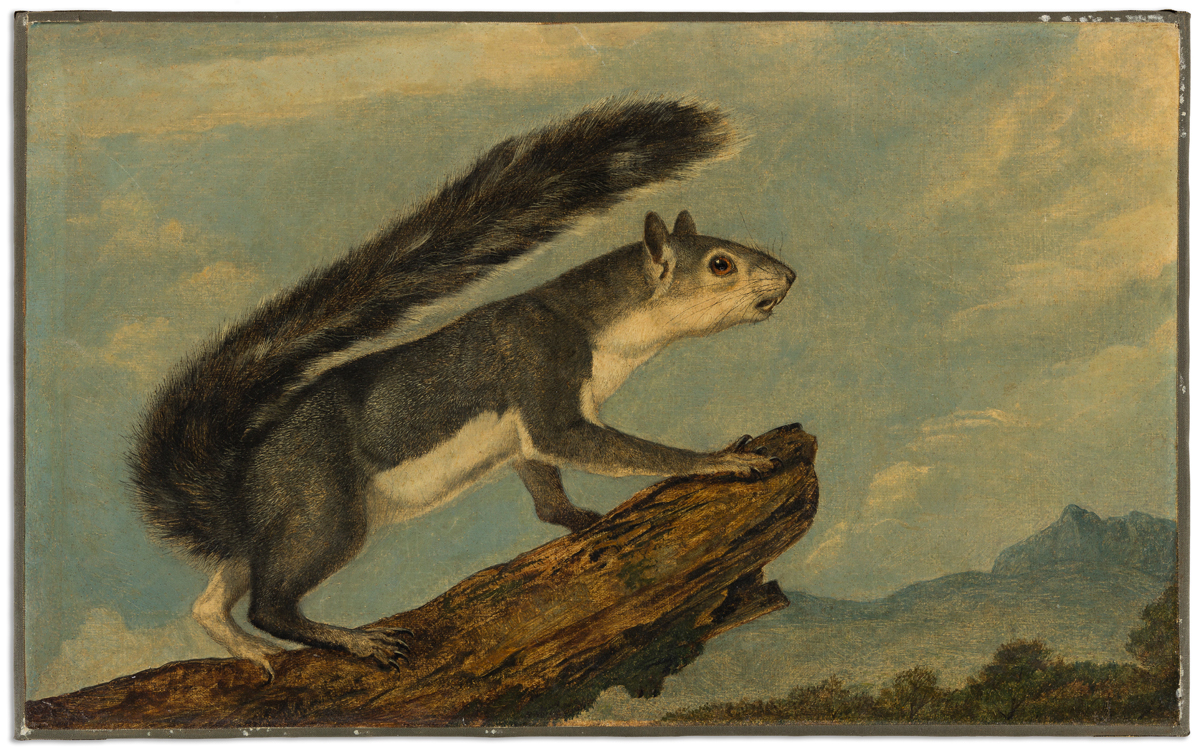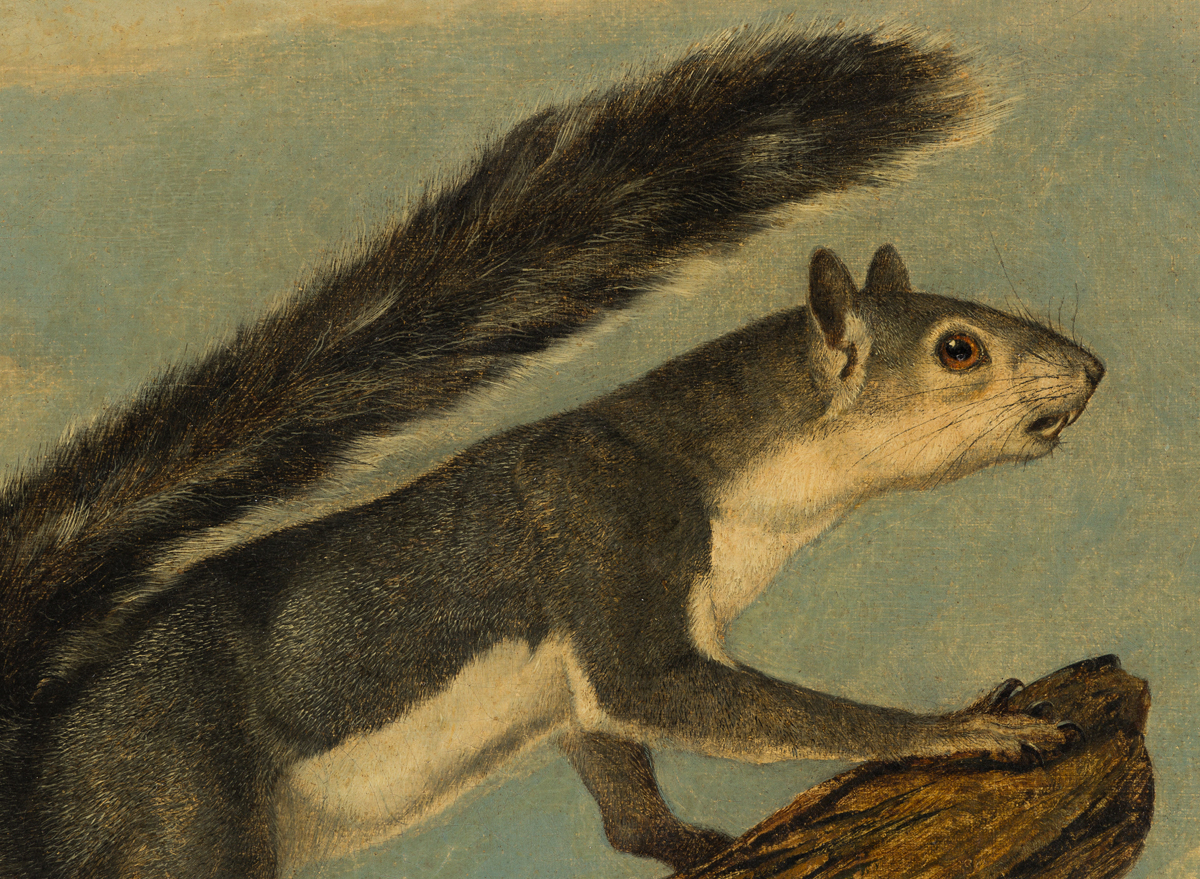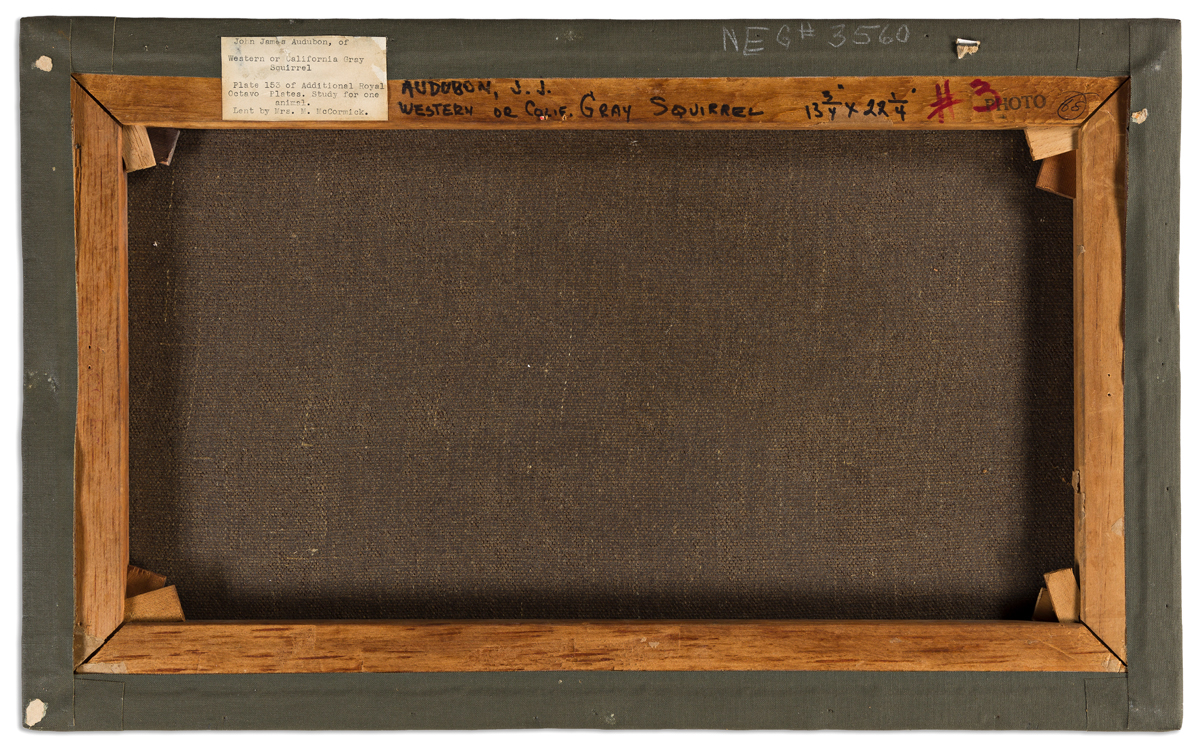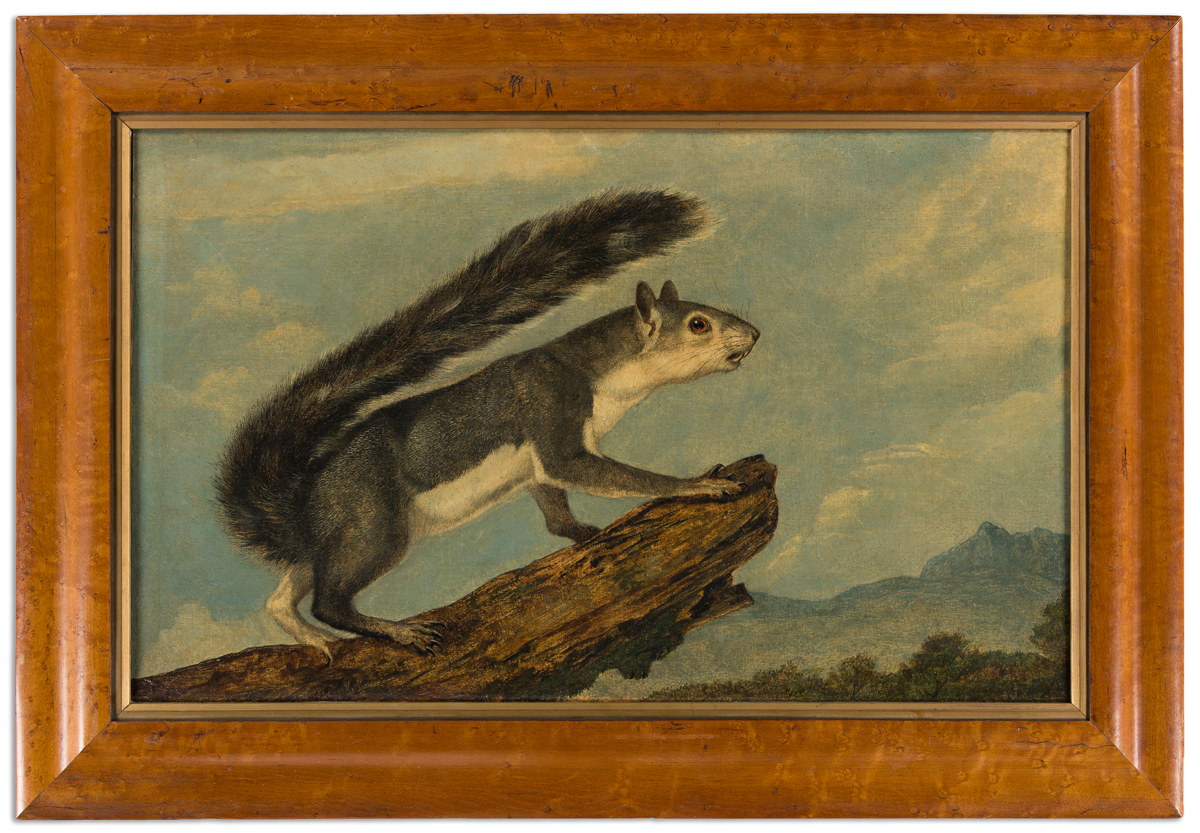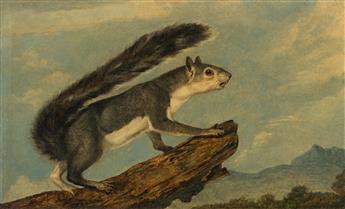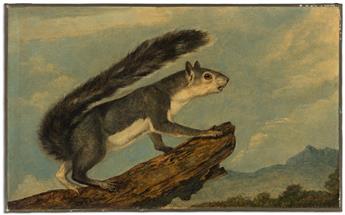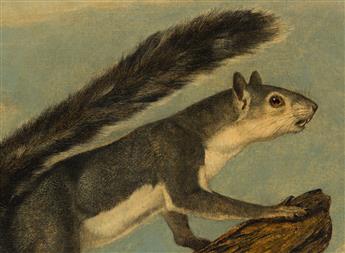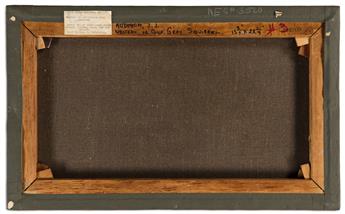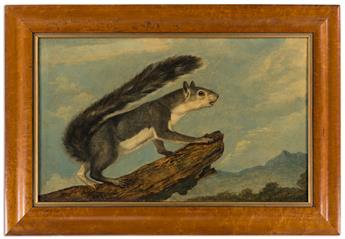Sale 2555 - Lot 346A
Price Realized: $ 34,000
Price Realized: $ 42,500
?Final Price Realized includes Buyer’s Premium added to Hammer Price
Estimate: $ 30,000 - $ 50,000
AUDUBON, JOHN WOODHOUSE (1812-1862). California Gray Squirrel. Oil on canvas, 13 3/4x22 1/4 inches; relined mid-20th century, varnish very slightly darkened, minor inpainting mostly keeping to the edges and small areas of sky; burled maple frame. Provenance: by direct descent through the artist's family. New York, circa 1853
Additional Details
The Audubon name is synonymous with art of the natural world. Most renowned for his iconic 'Birds of America', master naturalist John James Audubon expectantly encouraged and cultivated his two sons Victor Gifford and John Woodhouse to chase his own passions for illustrating American wildlife.
The older son, Victor, chiefly held responsibilities in the commercial end of the family work; but it was the second son, John Woodhouse, who excelled with a brush. On Christmas Eve, 1833, John James penned a lengthy letter to Victor from Charleston, South Carolina ruminating over much business, but including a particular note to glowingly report: 'John has drawn a few Birds, as good as any I ever made, and in a few months I hope to give this department of my duty up to him altogether; his improvements on other subjects are equally pleasing.' (Reproduced in Francis Hobart Herrick, Audubon the Naturalist, 1917, volume 2, page 56-57). Despite intimations at his retirement there at age 48, John James and his then 21-year-old son collaborated very successfully for a good many more years both in the field and in the studio.
The most important endeavor between the pair was their preparation of 'The Viviparous Quadrupeds of North America', a lithographed series of four-legged mammals published in both imperial folio and octavo-sized formats in the late 1840s. Both Audubons produced original artwork for the series but as the project grew on, the health of John James began to fail and much responsibility fell to the son to collect, source, and paint new subjects in order to continue the venture.
The present painting by John Woodhouse Audubon is a life-size oil portrait of a California Gray Squirrel and the animal is analogous in form, features, and positioning to that of its octavo-sized lithographed counterpart, plate CLIII, issued in 1854.
The painting is recorded on page 216 of Alice Ford's authoritative 1951 reference work 'Audubon's Animals' along with three other oils by J.W. Audubon as part of the collection of Mrs. Margaret McCormick, Tottenville, New York. In this entry Ford directly cites the California Gray Squirrel as 'one of two oils combined for octavo plate CLIII' (the other being a separately composed work of Col. Abert's Squirrel).
Margaret McCormick was the great-granddaughter of John Woodhouse; she bore no children and 'In July of 1974 she presented the author [Walter Audubon] with the John Woodhouse Audubon oil painting of the California Gray Squirrel, which had been published in the Quadrupeds book' (Walter Audubon, Last of the Audubon Line – The Descendants of John Woodhouse Audubon, 2002, page 63). Walter Audubon (d. November 2020) was great-great-grandson of John Woodhouse on another side of the family. He and Margaret were second cousins.
Further to the skilled execution of this playfully nimble western squirrel, its qualities of provenance and association are equally attractive, passing directly through the heirs of John Woodhouse Audubon until this time.
The older son, Victor, chiefly held responsibilities in the commercial end of the family work; but it was the second son, John Woodhouse, who excelled with a brush. On Christmas Eve, 1833, John James penned a lengthy letter to Victor from Charleston, South Carolina ruminating over much business, but including a particular note to glowingly report: 'John has drawn a few Birds, as good as any I ever made, and in a few months I hope to give this department of my duty up to him altogether; his improvements on other subjects are equally pleasing.' (Reproduced in Francis Hobart Herrick, Audubon the Naturalist, 1917, volume 2, page 56-57). Despite intimations at his retirement there at age 48, John James and his then 21-year-old son collaborated very successfully for a good many more years both in the field and in the studio.
The most important endeavor between the pair was their preparation of 'The Viviparous Quadrupeds of North America', a lithographed series of four-legged mammals published in both imperial folio and octavo-sized formats in the late 1840s. Both Audubons produced original artwork for the series but as the project grew on, the health of John James began to fail and much responsibility fell to the son to collect, source, and paint new subjects in order to continue the venture.
The present painting by John Woodhouse Audubon is a life-size oil portrait of a California Gray Squirrel and the animal is analogous in form, features, and positioning to that of its octavo-sized lithographed counterpart, plate CLIII, issued in 1854.
The painting is recorded on page 216 of Alice Ford's authoritative 1951 reference work 'Audubon's Animals' along with three other oils by J.W. Audubon as part of the collection of Mrs. Margaret McCormick, Tottenville, New York. In this entry Ford directly cites the California Gray Squirrel as 'one of two oils combined for octavo plate CLIII' (the other being a separately composed work of Col. Abert's Squirrel).
Margaret McCormick was the great-granddaughter of John Woodhouse; she bore no children and 'In July of 1974 she presented the author [Walter Audubon] with the John Woodhouse Audubon oil painting of the California Gray Squirrel, which had been published in the Quadrupeds book' (Walter Audubon, Last of the Audubon Line – The Descendants of John Woodhouse Audubon, 2002, page 63). Walter Audubon (d. November 2020) was great-great-grandson of John Woodhouse on another side of the family. He and Margaret were second cousins.
Further to the skilled execution of this playfully nimble western squirrel, its qualities of provenance and association are equally attractive, passing directly through the heirs of John Woodhouse Audubon until this time.
Exhibition Hours
Exhibition Hours
Aliquam vulputate ornare congue. Vestibulum maximus, libero in placerat faucibus, risus nisl molestie massa, ut maximus metus lectus vel lorem.



